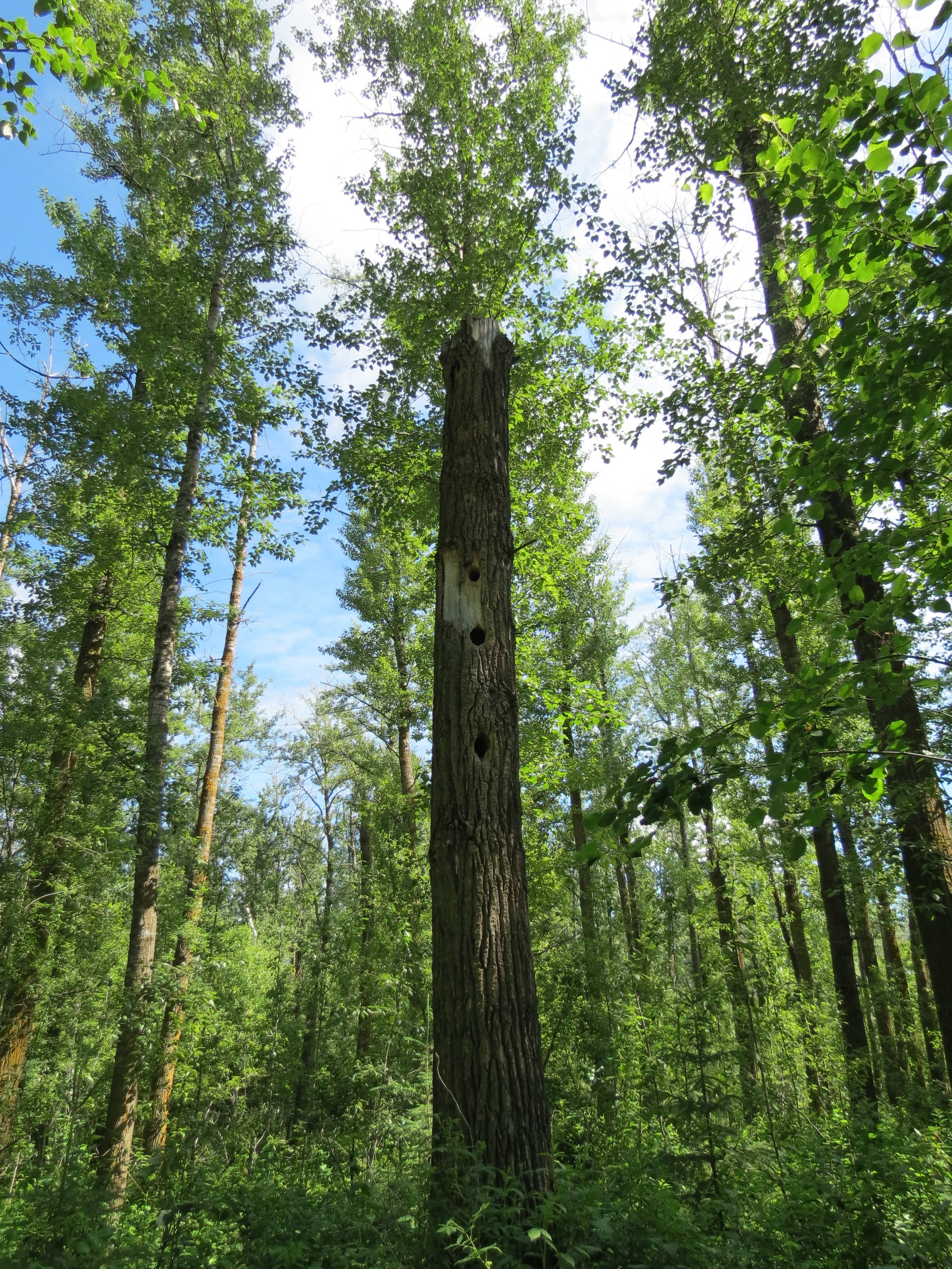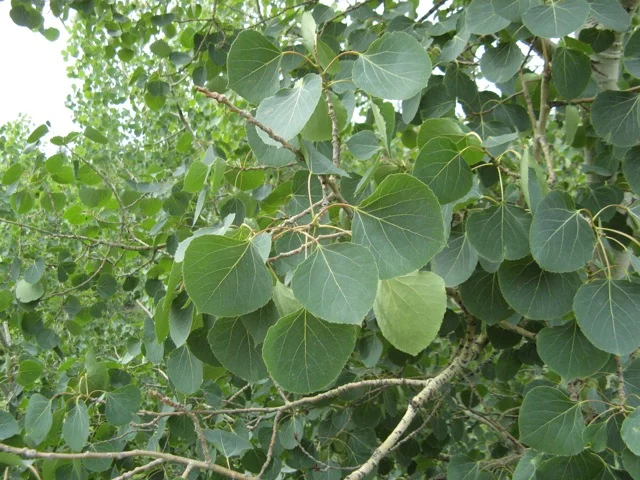Aspen Poplar (Populus tremuloides)
Also known as Trembling Aspen or Quaking Aspen
This tree is essential to the Aspen Parkland, the ecoregion where Edmonton is found. Tall, straight, with powdery white bark, you can hardly miss this lovely tree. The trembling aspen gets its name from the unusual flat petiole, or leaf stems, which cause the leaves to flutter, or “quake” in the slightest breeze.
Photo by Roxy Hastings
Why they Matter to Us
Trembling Aspen have a long history of human use. They are an important source of lumber, presently and historically.
These trees are representative of the Aspen Parkland Ecoregion, where Edmonton is located.
Trembling Aspen provide food for porcupines, beavers, deer, moose, snowshoe hare, ruffed grouse, and black bears. They also provide homes for birds including songbirds, woodpeckers, and owls.
Trembling Aspen regenerate quickly in response to fire or other damage.
How You Can Help
Snag providing habitat for many creatures
Leave dead or dying trees standing (rather than knocking them down) in natural areas and green spaces. They provide food and valuable habitat for woodpeckers, songbirds, insects, and mammals.
Plant trees. Whether you are in a natural area (with permission) or your backyard.
Support protected areas such as those conserved by EALT!
Be careful not to start fires. Put out your campfire throughily, and don’t throw cigarette butts on the ground.
Don’t hunt carnivores such as wolves. There is a chain of impacts on an ecosystem when top predators are removed. When there are few or no wolves, deer become extremely plentiful, and they can eat all the young aspen shoots, preventing regeneration.
How to Identify
To identify the Aspen Poplar tree, look for these distinguishing features:
Aspen trees have white, powdery bark. Aspen is similar to balsam polar, with bark that is often slightly more grey and usually more wrinkled and rough, especially at the base.
Aspen tree are most often tall and straight.
Aspen leaves are petite and heart shaped.
Where to Find
Aspen is found across North America. It can be found in slightly drier areas (upland) than other tree species, but still needs some moisture. Examples of places you could find Aspen include pasture, uplands, and rolling hills.
Food Chain
Aspen are primary producers and create food through photosynthesis. They require soil full of minerals, water, and sunlight.
Aspen photosynthesize even with their bark. This means that they can provide valuable winter food for porcupine, moose, black bear, beaver, ruffed grouse and rodents. These animals may eat the bark and/or leaves of aspen trees.
Aspen also provide food for a wide variety of insects and fungi. Insect larvae and adults may eat the leaves or rotting wood, and fungi may decompose the tree as well. This in turn provides food for other forest creatures, and the rotting tree will eventually provide nutrients to other trees in the forest.
Fun Facts
What is a tree? Some scientists think that an aspen grove connected by a root system may be a single organism. Aspen are known for “suckering” or producing new trees from their root system if adult trees are damaged. The roots stay connected, and all trees that are connected, known as a "clone" will grow leaves or lose their leaves all at the same time. If aspen responds in this way, can each tree still be considered a separate organism?
The oldest known aspen clone has lived more than 80,000 years on Utah’s Fishlake National Forest. This clone has lived for 13 times as long as civilization as we know it today!
Aspen wood has many uses such as matches (not very flammable), saunas (doesn’t splinter much), and lumber.
In the past, aspen has been used as a painkiller. It contains salicylates, which are similar to aspirin. today salicylates are also used to treat acne, warts, dandruff, and ringworm, because the acid form can remove the outer layer of human skin. It can even be used also as a food preservative and as an antiseptic! Like any chemical, it can be harmful in too high a dose.




